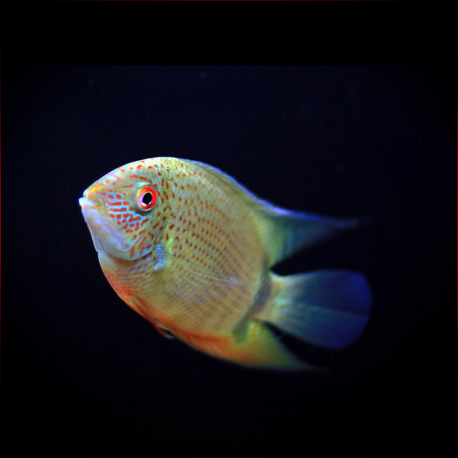More info
Datasheet
| Minimum Tank Size | 243 litres / 64.19 US gallons |
| Maximum Size | 30.0cm / 11.81inches |
| Temperature | 22°C / 71.60°F - 29°C / 84.20°F |
| Hardness | 1-8ºdH |
| pH | 5.5-7.0 |
General Description
The Severum, scientifically known as Heros Efasciatus, is a popular cichlid species in the aquarium trade, commonly available in green and gold varieties. These fish can grow up to 30.0cm in size and are best suited for South American community setups with larger, peaceful species, as they quickly outgrow smaller tanks due to their rapid growth rate.
Aquarium Setup
For an ideal tank setup, a substrate of river sand, driftwood branches, and twisted roots can mimic their natural habitat. Aquatic plants are generally absent in their native waters, but adding driftwood can stain the water a tea-like color. To replicate black water conditions, a small net bag of aquarium-safe peat in the filter can be beneficial. Maintaining water hardness between 1-8°dH, a pH range of 5.5-7.0, and a temperature of 22-29°C is crucial (see table).
Behaviour
Known for being mild-mannered, Severums are suitable for community tanks with larger species, particularly other South American fish. When kept individually, some individuals may display aggressive behavior as they mature. However, this is usually curbed by maintaining them with conspecifics, reducing the likelihood of aggressive tendencies developing.
Feeding and Diet
Severums are omnivorous and adaptable eaters. A balanced diet should include high-quality dried foods, along with meaty offerings like bloodworms, earthworms, and prawns. Incorporating vegetable matter such as shelled peas, blanched spinach, and spirulina-based foods is recommended.
Reproduction & Dimorphism
Breeding Severums is best achieved by raising a group of young fish together until a natural pair forms. Spawning typically occurs on flat stones or similar surfaces, with both parents guarding the eggs and practicing mouthbrooding. Males are larger and exhibit distinct markings on their gill covers, sometimes developing nuchal humps and fin extensions.
Habitat and Distribution
These cichlids are widespread in the slow-moving rivers, tributaries, and floodplain lakes of the Amazon basin, particularly in calm waters with submerged tree roots and branches. Their distribution extends throughout the Amazon main channel, rio Solimoes, and the rio Xingu.

